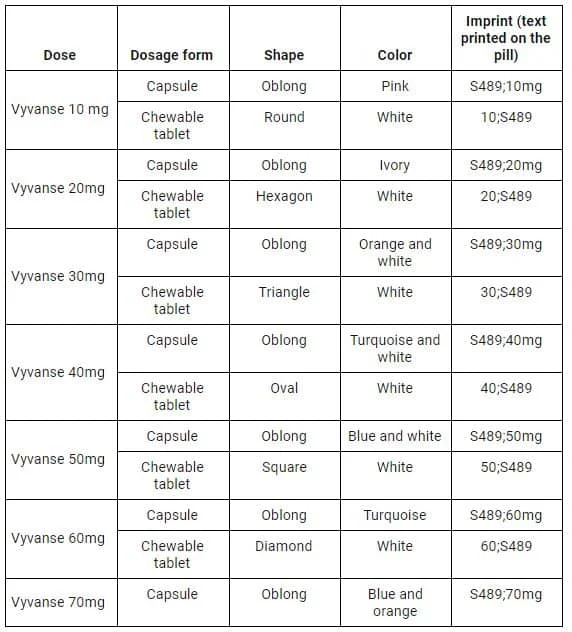As a Schedule II controlled substance, Vyvanse can be addictive, especially if you misuse the drug. Understanding Vyvanse is the first step to getting help.
Vyvanse is the brand name for the prescription stimulant lisdexamfetamine, which is classified as a Schedule II controlled substance. This means that Vyvanse has a high potential for abuse, addiction and dependence. This is especially true when Vyvanse is abused for non-medical reasons.
Article at a Glance:
- Vyvanse, the brand name for lisdexamfetamine, is a Schedule II controlled substance often prescribed for attention-deficit hyperactivity disorder or binge eating disorder.
- Misuse is common and may increase the risk of addiction.
- Vyvanse increases the amount of the brain’s reward chemical, dopamine, which can set the stage for addiction.
Is Vyvanse Addictive?
As a Schedule II controlled substance, Vyvanse can be highly addictive. The drug increases the amount of dopamine, a neurotransmitter in your brain. Dopamine is the brain’s feel-good chemical and helps to reinforce behaviors. Some people, primarily those with attention-deficit hyperactivity disorder, or ADHD, benefit from Vyvanse because their brains do not make enough dopamine.
However, Vyvanse can be dangerous if you take more than prescribed or if you take it for non-medical reasons. Stimulants like Vyvanse are frequently abused by college students seeking to enhance their concentration and use it recreationally.
As a long-acting stimulant, Vyvanse is less prone to abuse than shorter-acting stimulants. Addiction is most likely to occur if you misuse Vyvanse or take it when it hasn’t been prescribed to you.
What Does Vyvanse Look Like?
Currently, Vyvanse is available as a brand-name drug only. It only has one manufacturer, so it’s easier to identify than a generic drug, which may have many manufacturers. Vyvanse comes in a capsule and chewable tablet dosage form, which can be identified as follows:

How is Vyvanse Prescribed?
Because Vyvanse is a Schedule II controlled substance, doctors and pharmacies are heavily regulated in how they can prescribe and dispense the drug. According to federal law, doctors are not allowed to prescribe refills on Schedule II drugs like Vyvanse and must write a new prescription every time they are needed. Individual states may have more restrictive laws. For example, some states limit the supply of Vyvanse that a doctor can prescribe.
What is Vyvanse Used For?
Vyvanse is FDA-approved to treat ADHD and binge eating disorder. In ADHD, Vyvanse has been shown to improve both hyperactive/impulsive and inattentive symptoms in adults and children as young as six years old. For someone dealing with binge eating disorder, Vyvanse can reduce the number of binge days per week that they experience.
When people misuse Vyvanse, it is often abused to stay awake, study or focus on work. In addition to a risk of addiction, abusing Vyvanse has long-term effects, including mental health issues, heart problems, malnourishment and organ damage.
Know the Signs of Vyvanse Addiction
Signs of Vyvanse abuse can emerge when a person begins to struggle with Vyvanse. Some symptoms include:
- Social withdrawal
- Excessive time spent with new friends
- Mood swings, including irritability and reckless behavior
- Changes in sleep habits
- Missed appointments or deadlines
- Problems at work, school or with the law
Physical and behavioral signs and symptoms may also be linked to Vyvanse addiction like sweating, dilated pupils, loss of appetite and experiencing a crash after a Vyvanse high.
If you or someone you love is struggling with their Vyvanse use, help is available. Contact The Recovery Village to discuss customized treatment plans for your Vyvanse addiction and any co-occurring mental health conditions.


Signs of Vyvanse Abuse
U.S. National Library of Medicine. “Vyvanse.” October 30, 2019. Accessed October 10, 2020.
U.S. Department of Justice, Drug Enforcement Administration. “Title 21 United States Code (USC) Controlled Substances Act.” Accessed October 10, 2020.
Centers for Disease Control and Prevention. “Prescription Drug Time and Dosage Limit Laws.” March 5, 2015. Accessed October 10, 2020.
National Institute on Drug Abuse. “Prescription Stimulants DrugFacts.” June 2018. Accessed October 10, 2020.
Substance Abuse and Mental Health Services Administration. “Adults With Attention Deficit Hyperactiv[…]stance Use Disorders.” Fall 2015. Accessed October 10, 2020.
Bielamowicz, Kate. “America’s Workforce Runs on Uppers.” JSTOR Daily, June 1, 2016. Accessed October 10, 2020.
National Institute on Drug Abuse. “What are some signs and symptoms of some[…] a drug use problem?” Accessed October 10, 2020.
The Recovery Village aims to improve the quality of life for people struggling with substance use or mental health disorder with fact-based content about the nature of behavioral health conditions, treatment options and their related outcomes. We publish material that is researched, cited, edited and reviewed by licensed medical professionals. The information we provide is not intended to be a substitute for professional medical advice, diagnosis or treatment. It should not be used in place of the advice of your physician or other qualified healthcare providers.